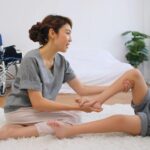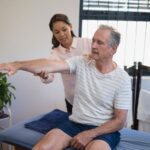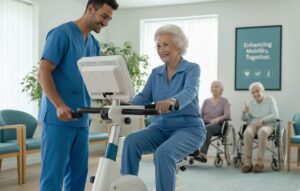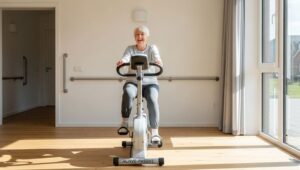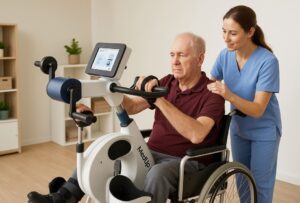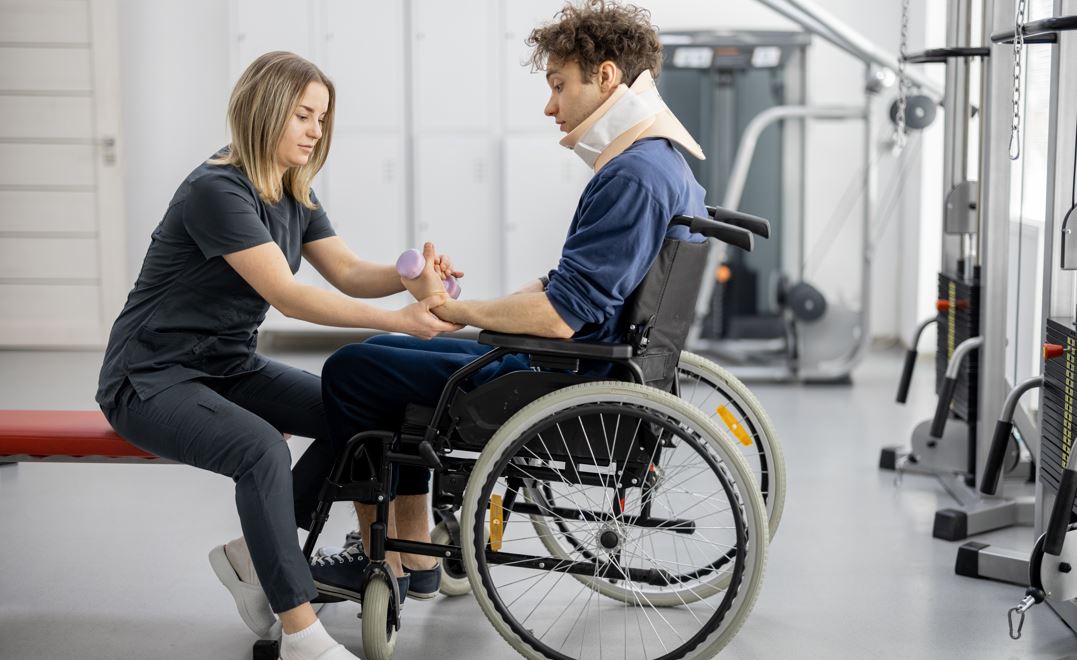
Understanding Rehabilitation Equipment Coverage in Ontario
If you or a loved one has experienced a catastrophic accident resulting in a spinal cord injury or severe mobility challenges, rehabilitation equipment can be essential for recovery. However, the costs associated with this equipment, such as motor-assisted bikes, wheelchair-accessible exercise machines, and other high-end rehabilitation devices, can be overwhelming. Fortunately, there are avenues for financial support through insurance companies and government programs in Ontario, Canada.
Insurance Coverage for Rehabilitation Equipment
- Extended Health Insurance Plans:
- Many private extended health insurance plans cover rehabilitation equipment. However, coverage varies widely, so it’s essential to review your policy.
- Typical coverage may include wheelchairs, motorized scooters, walkers, and devices like Active-Passive Cycle Trainers. Your insurance provider might cover a significant portion or the full cost, depending on the plan.
- Automobile Insurance:
- If you’ve sustained injuries in a motor vehicle accident, you may be entitled to benefits under Ontario’s Statutory Accident Benefits Schedule (SABS).
- Catastrophic Injuries: For severe injuries, like spinal cord damage, you may be classified as “catastrophically impaired,” which allows you to access more extensive rehabilitation benefits. This coverage can include up to $1 million in medical and rehabilitation benefits over your lifetime.
- You may need a medical professional to outline your rehabilitation equipment needs, such as Active-Passive Cycle Trainers, to demonstrate how they support your recovery and rehabilitation process.
- Workplace Safety and Insurance Board (WSIB):
- If your injury happened at work, the WSIB might cover the cost of rehabilitation equipment. In such cases, they offer various forms of support, including mobility devices, exercise equipment, and assistive technology.
Government Programs for Rehabilitation Equipment Coverage
- Assistive Devices Program (ADP):
- Ontario’s Assistive Devices Program helps people with long-term physical disabilities obtain needed equipment and supplies. The ADP covers up to 75% of the cost for many assistive devices, including mobility aids and wheelchairs.
- To qualify, a medical professional must prescribe the equipment, and it needs to be purchased from an authorized vendor. It’s worth investigating if your Active-Passive Cycle Trainer falls under this coverage, especially if it supports long-term mobility and exercise.
- Ontario Disability Support Program (ODSP):
- ODSP offers income and employment support to individuals with disabilities. The program can help cover the cost of necessary rehabilitation equipment.
- Applicants need to demonstrate that the equipment is essential for daily living or improving quality of life. For those with severe mobility challenges, the Active-Passive Cycle Trainer could be a valuable addition to their rehabilitation journey.
- Non-Insured Health Benefits (NIHB) Program:
- If you are a First Nations person or an Inuit recognized by Indigenous Services Canada, the NIHB program may cover the costs of rehabilitation equipment.
- This program covers various assistive devices and could support the acquisition of equipment like the Active-Passive Cycle Trainer.
How to Pursue Coverage for Rehabilitation Equipment
- Gather Documentation:
- Obtain a medical assessment and prescription from a qualified healthcare professional. This step is crucial as it establishes the need for the equipment.
- Collect any documentation that demonstrates how the equipment will aid in recovery or improve quality of life. Include testimonials or case studies showing how an Active-Passive Cycle Trainer has benefited others in similar situations.
- Research and Apply:
- Research all available insurance and government programs that provide coverage. Submit detailed applications, including medical documentation and a description of the equipment, emphasizing its benefits.
- Contact a caseworker or social worker who can help navigate the application process, especially for government programs like ODSP or ADP.
- Appeal Denied Claims:
- If your claim is denied, don’t give up. Many applications are initially rejected due to incomplete documentation or misunderstanding of the equipment’s purpose. Be prepared to provide additional information and appeal the decision.
How the Active-Passive Cycle Trainer Fits into Rehabilitation
The wheelchair-accessible motor-assisted Active-Passive Cycle Trainer is an innovative piece of rehabilitation equipment designed for individuals with mobility challenges in their arms or legs. It offers numerous health benefits, such as:

- Improved Circulation: Helps stimulate blood flow, which is crucial for those with limited mobility.
- Muscle Strengthening: Allows users to maintain muscle tone, even if they have limited or no voluntary movement.
- Range of Motion: Enhances flexibility and range of motion in the limbs, reducing stiffness and preventing contractures.
- Mental Health Benefits: Engaging in physical activity can improve mood and overall well-being, making it an essential tool for long-term rehabilitation.
Including this device in your rehabilitation plan can be a game-changer, and with the right documentation, you can maximize your chances of obtaining insurance or government coverage.
Access Your Coverage for Rehabilitation Equipment
Recovering from a catastrophic accident or dealing with severe mobility challenges can be a long and costly journey, but it’s important to know that financial support is available through various insurance policies and government programs in Ontario. By understanding the options provided by extended health plans, automobile insurance, WSIB, and programs like the Assistive Devices Program (ADP), you can significantly reduce the financial burden of acquiring essential rehabilitation equipment. Taking proactive steps to gather medical documentation and understanding the application processes can improve your chances of accessing the coverage you need.
Incorporating an Active-Passive Cycle Trainer into your rehabilitation plan can offer immense health benefits, helping you or your loved one regain mobility, strength, and independence. With the right support and persistence, you can make the most of the resources available to aid in your recovery journey
